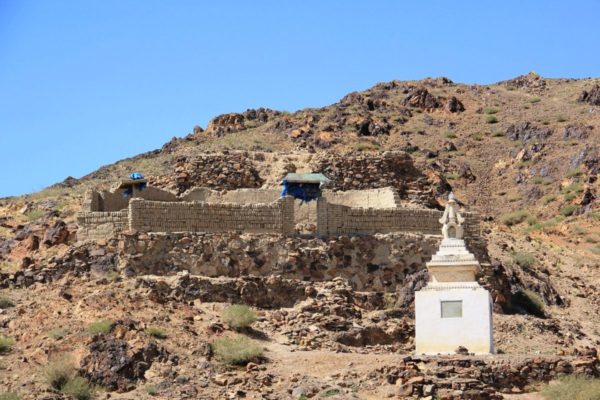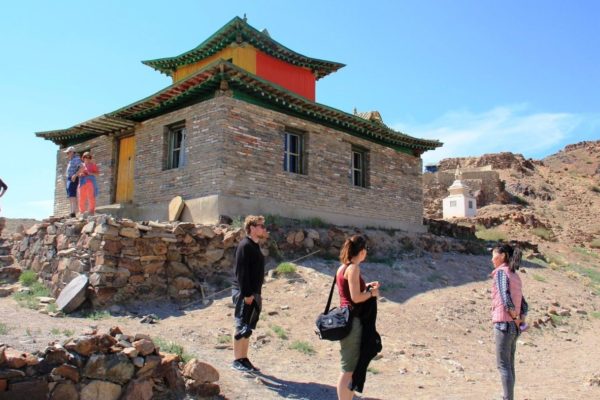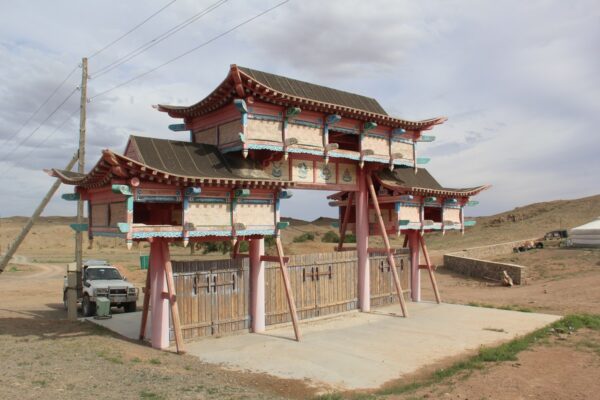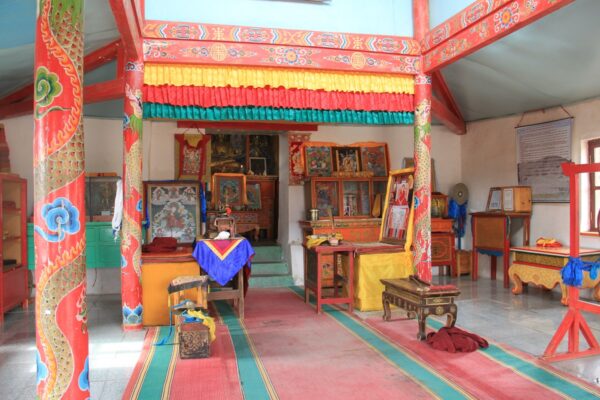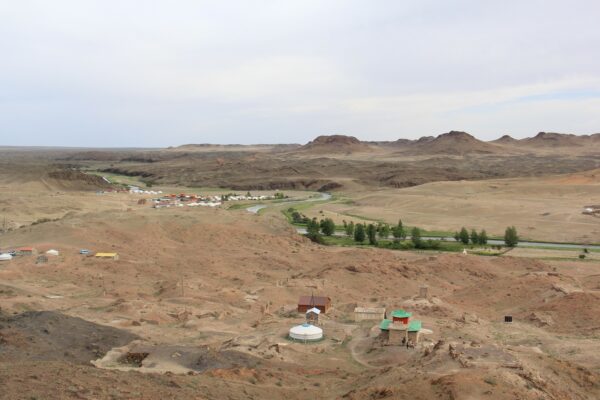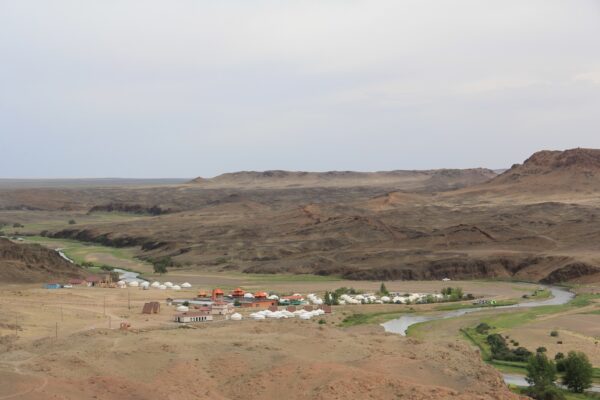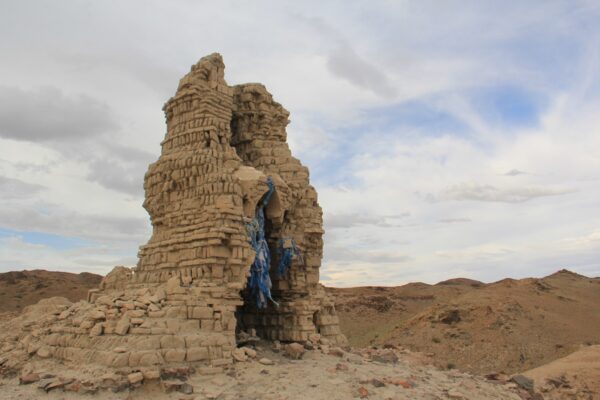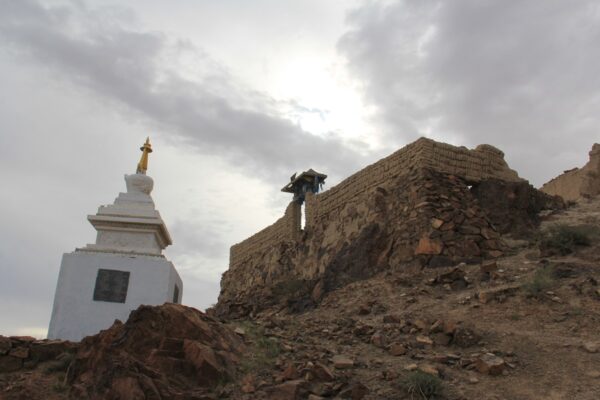North of Bayanzag, there lies Ulaan Lake, the easternmost lake situated in the valley of the Gobi Lakes. This lake, once covering an area of 175 square kilometers, now lies in a dried-up basin. The Ongi River flows here, and the slope continues further up to the Ongi Monastery. The monastery, founded in 1750, is situated on both sides of the river, with the facility on the south side called Khutagt, and the one on the north side called Barlim. Unfortunately, both monasteries were destroyed by Choibalsan, the head of state, in 1937.
Gundjambaalin Monastery or Ongi Monastery
The ruins of the Ongi Monastery are located on the slopes of Saikhan-Ovoo mountain on the east bank of a bend of the Ongi River in the province of Dundgovi. Known as the Gundjambaalin Monastery in Tibetan, which translates to “khotol uglugch”, the monastery was built between 1760 and 1810 by the noble monk Ishdonlhundev and his disciple Damtsagdorj. At that time, there were 28 mosques where more than 1,000 monks were studying.
Khoshuu Khural Monastery on the left
The rocks on the slopes of Saikhan-Ovoo mountain were carefully excavated and leveled, with high staves built on top of them. Along the banks of the Ong River, 15 km away from the monastery, there was another monastery called the Khoshuu Khural Monastery, which was part of the “Three Ongi Monasteries” that included the monastery of the noble monk, built on the right wing of the Ong monastery, and the monasteries of the archbishop Damtsagdorji, built on the left wing.
Khutagt Lama Monastery on the right
On the right side of the main square of the Ongi Monastery, there was the Khutagt Lama Monastery with a large blue brick courtyard, while on the left side was the Monastery of Abbot Dantsagdorji, which stood for 220 years. The noble monk’s monastery had nine churches with glazed brick roofs, and the right and east stupas with wheels, while archbishop Dantsagdorj’s monastery had 13 beautiful churches built up the mountain.
Tsagaan Shukhert God
On the flat stone on the mound of Ongi Monastery, the Tsagaan Shukhert God is carved. There are five sacred mounds in the surrounding mountains, named Durvuljin Shashir, Burhant Shashir, Luvsan Jamba, Bumbat, and Saikhan-Ovoo. At the eastern edge of the monastery, a fence with shade was built to protect the stomach spring, and a well was built to be used.
Today, in the main part of the village, a temple called Dugan of East Guden has been rebuilt, and inside it, there are portraits and sculptures of Buddha, Arvan Khangal, the owner of the temple, Archbishop Dantsagdorj, three idols of age, Goviin Lha, Maidar, Bogd Zonkhov, and Lovon Badamjunai. The Ger Museum was established in 2001 near the ruins of Ongi Monastery.
The museum houses 21 volumes of sutras called “Sumbum” composed by Archbishop Dantsagdorj, a skull bowl he used, a trumpet made of medulla bone, a copper dombo used by the monks of the monastery, utensils, clothes called Lagainamjir, a wooden trough for kneading, and tea. A steam mill, a bronze pot, a pillar, a wood-piercing drill, Mongolian scales, scales, a chest used for camels, and decorations left over from the destruction of the Ongi monastery, etc., are exhibited.
In 2011, a statue of Luvenjalbuu god the king of Lus was carved on the Khadat mountain in front of the Ongi monastery. The statue, weighing 1.3 tons and standing at 2 meters high, was created by local residents to make the Ongi River flow again.

